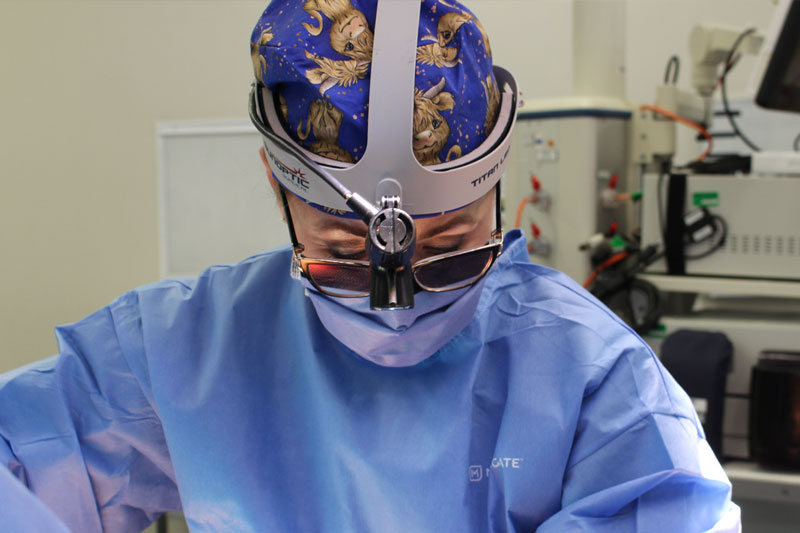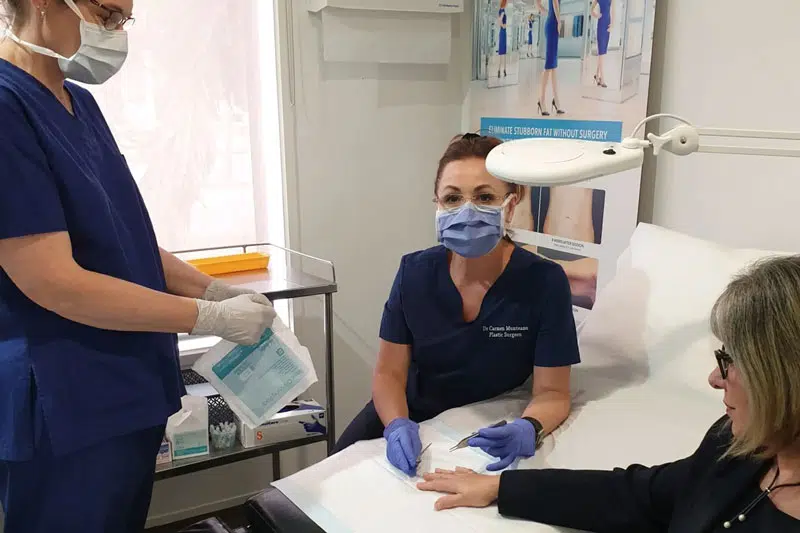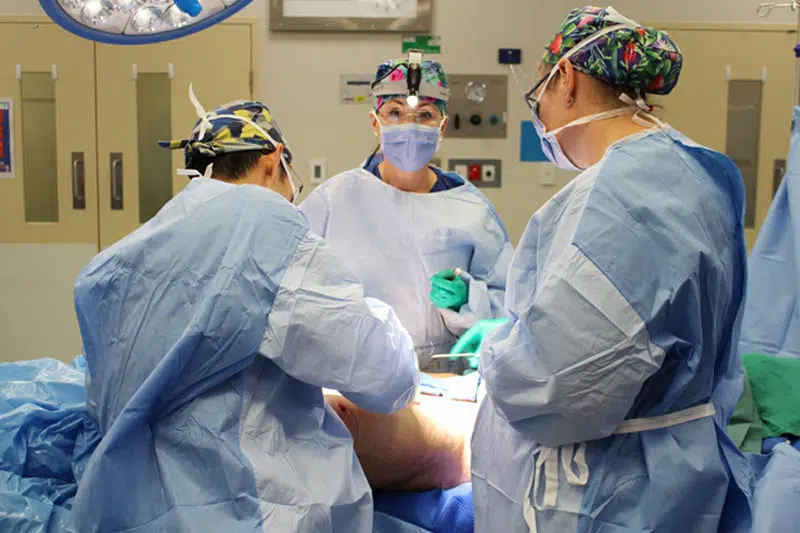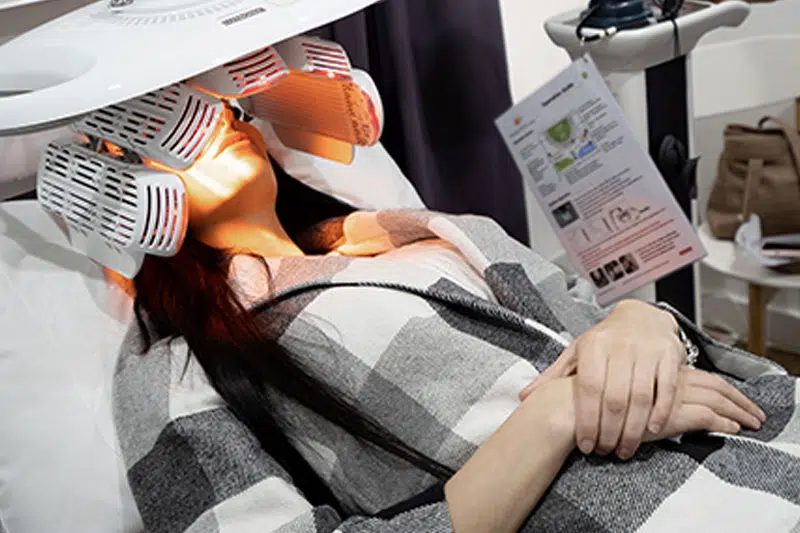How Long Do Results Last after Fat Transfer to the Breasts?
If you’re considering breast enlargement, you may have come across the option of fat transfer to breasts. This procedure offers a natural and subtle enhancement by using your body’s own fat cells. But before making a decision, it’s essential to understand the longevity of fat transfer breast augmentation and the factors that can influence the lasting results. In this blog post, we will discuss how fat transfer breast augmentation works, assess the outcomes, and explore the techniques and strategies that optimise fat survival.
Dr Carmen Munteanu is a Melbourne Specialist Plastic Surgeon regularly performing Fat Transfer to Breasts.
Take our Plastic Surgery Quiz to find out if you’d be a good candidate and if you are ready for cosmetic surgery.
How Is Fat Transfer Breast Augmentation Performed?
Fat transfer breast augmentation, also known as autologous fat transfer or natural breast augmentation, is a surgical procedure that involves using your body’s own fat cells to enhance the size and shape of your breasts. This technique offers a more natural and subtle approach to breast enlargement compared to traditional implant-based augmentation.
The procedure consists of two main steps: harvesting fat from one part of your body through liposuction and then injecting that fat into your breasts.
1. Collecting Fat Cells with Liposuction
During the initial step, Dr Carmen will identify an area of your body with excess fat, such as the abdomen, thighs, or hips, and perform liposuction to remove the fat cells. Liposuction involves making small incisions and using specialised suction tools to gently remove the fat from the donor site. This fat extraction is done using gentle techniques to ensure the viability and integrity of the fat cells.
2. Purification and Preparation of the Fat Cells
After the fat is extracted, it undergoes a purification process. The harvested fat is carefully processed to separate impurities, oils, and excess fluids from the healthy fat cells. This purification step ensures that only the most viable and healthy fat cells are used for the transfer.
3. Fat Injection into the Breasts
Once the fat cells are purified, they are ready for injection into the breasts. Dr Carmen will create small incisions in strategic locations on the breast, in areas where they will be difficult to see. Using specialised cannulas, the purified fat cells are meticulously injected into the breast tissue layers, carefully sculpting and enhancing the shape and volume of the breasts.
What Happens after Fat Transfer Breast Augmentation
Following the surgery, the breasts might appear more voluminous than expected due to the inflammation and the additional fat introduced by Dr Carmen. This extra fat is intended to offset the 30-50% of fat that your body will eventually assimilate. The fat grafts take around 3-6 months to settle, after which the full impact of the surgery on the volume and shape of the breasts can be truly observed.
The operation requires liposuction to collect the fat grafts, a process that can result in a well-defined body contour by reshaping areas with excess fat. The outcomes of liposuction generally become visible after 6-12 weeks, with the treated areas manifesting a noticeably more streamlined appearance.
Why Does the Body Absorb Some of the Fat Injected?
During the fat transfer procedure, some of the fat cells can get damaged during the process of liposuction. These damaged cells are not viable and hence, they die. The body recognises these dead fat cells and absorbs them. This usually constitutes around 30-50% of the fat grafts that were initially transferred.
We cannot distinguish between living and dead fat cells during the procedure. Therefore, after processing and purifying the extracted fat, all of it is transferred to the desired area. Over time, the body naturally discards the dead fat cells and integrates the living cells into the injected area. This is why some of the transferred fat gets absorbed by the body post-procedure.
Factors Influencing Fat Transfer Results
The success and longevity of a fat transfer procedure are not solely dependent on the surgical process itself. Several factors can significantly influence the outcomes, including the patient’s weight, age, and lifestyle habits.
· Weight Fluctuations
The volume derived from a fat transfer procedure is from living fat tissue. Therefore, any weight changes after the surgery can impact the results. If a patient loses weight, the volume will decrease as the fat cells shrink. Conversely, gaining weight will cause the fat cells to expand, increasing the volume. Both scenarios can alter the shape and contours created during the surgery, which is why maintaining a stable weight post-surgery is crucial for preserving the results.
· Ageing
Ageing is a natural process that affects all parts of the body, including the skin. As we age, our skin loses its elasticity, leading to sagging. This sagging can also affect the breasts, potentially diminishing the shape and contouring effects of a fat transfer breast augmentation over time. However, additional procedures like a breast lift can help restore the breasts’ perkiness and prolong the results of the initial fat transfer.
· Lifestyle Habits
Lifestyle habits, including exercise can also significantly influence the outcomes of a fat transfer procedure. A balanced diet and regular exercise help maintain a stable weight, which is crucial for preserving the results. However, exercising too soon or too much after getting fat transferred to the breasts can have a negative impact on the results of the surgery. Even your sleeping position after getting autologous fat transfer can impact the results of your procedure. This is why Dr Carmen recommends avoid sleeping on the tummy or the sides for a few weeks after the surgery.
· If You Were a Good Candidate for Fat Transfer to the Breasts
Generally, women in good health, with a BMI below 30, are usually eligible for the procedure. It is also recommended to undergo the surgery after reaching your ideal weight to maintain the results. Being an eligible candidate for the surgery can influence the results – if you don’t have enough fat in donor areas, the procedure might not be successful.
How Much Can Fat Transfer Increase Breast Size?
Fat transfer procedures have become a popular method for breast augmentation due to their natural results and dual benefits of body contouring. But how much can this procedure actually enhance breast size?
In most cases, a fat transfer procedure can increase the volume of the breasts by approximately half to one cup size. This makes it a good choice for women seeking a modest, natural-looking enhancement rather than a dramatic increase in size.
The exact increase in size can vary depending on several factors, including the amount of excess fat a patient has available for transfer and the patient’s body’s ability to integrate the transferred fat cells.
It’s important to note that the procedure can be repeated if a patient desires additional volume, provided they have sufficient excess fat.
For women seeking a more pronounced enhancement while still enjoying the benefits of a fat transfer, the procedure can be combined with breast implants. This technique, known as composite breast augmentation, allows for a significant increase in size while maintaining a natural look and feel.
Download Dr Carmen’s Guide to Fat Transfer to Breasts – Natural Breast Enhancement
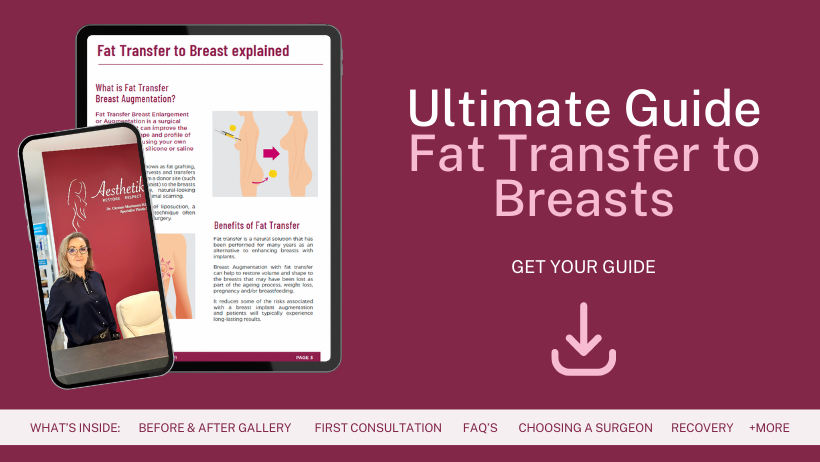
Combining Fat Transfer with Implants
For patients seeking additional volume or more significant breast enlargement, combining fat transfer with implants may be an option. This hybrid approach allows for a customised solution, addressing both volume augmentation and natural contouring. By combining the two techniques, Dr Carmen can optimise the longevity of the results and create a more harmonious aesthetic outcome tailored to the patient’s desires.
FAQs about Fat Transfer to Breast

How long does the enlargement achieved through fat transfer to the breasts last?
- The longevity of fat transfer breast enlargement varies among patients. While the transferred fat can provide long-lasting results, it’s important to note that some degree of fat resorption is expected over time. Factors such as surgical techniques, patient characteristics, and lifestyle choices can influence the duration of the outcome. Generally, maintaining a stable weight, avoiding significant weight fluctuations, and following postoperative care instructions can help maximise the longevity of the results.
Are the results of fat transfer breast augmentation permanent?
- While fat transfer breast augmentation can provide long-lasting results, it is important to understand that the outcome may evolve over time. Some of the transferred fat is naturally absorbed by the body, which can affect the initial fullness and volume. However, a significant portion of the transferred fat can integrate successfully and persist in the breasts for years. The extent of permanence depends on various factors, including the patient’s unique characteristics, surgical techniques, and lifestyle choices.
Can exercise and weight fluctuations impact the longevity of fat transfer breast enlargement?
- Exercise and weight fluctuations can influence the longevity of fat transfer breast enlargement. Intense physical activity and substantial weight changes can potentially affect the stability of the transferred fat. It is recommended to discuss exercise plans and weight management strategies with Dr Carmen before undergoing the procedure. Maintaining a healthy lifestyle, including regular exercise and a balanced diet, can contribute to the longevity of the results.
What are some possible problems with fat transfer breast augmentation?
- As with any surgical procedure, there are potential risks and complications associated with fat transfer breast augmentation. These can include infection, haematoma, asymmetry, changes in nipple sensitivity, and unsatisfactory aesthetic outcomes. However, with careful patient selection, a skilled surgeon, and adherence to postoperative care instructions, the risks can be minimised.
Is combining fat transfer with breast implants a viable option for achieving longer-lasting results?
- Combining fat transfer with breast implants can be a viable option for patients seeking more significant volume augmentation or a more substantial breast enlargement. This hybrid approach allows for a customised solution, taking advantage of both fat transfer and implants.
Further Reading about Breast Augmentation with Dr Carmen
- Read Dr Carmen’s Fat Transfer to Breast Surgery
- Read Dr Carmen’s Blog about Fat Grafting to Breasts FAQs – Questions about Fat Transfer Procedure
- Read Dr Carmen’s Blog about Recovery After Breast Lift Surgery – Tips, Timeline and Healing
- Read Dr Carmen’s Breast Augmentation Surgery Page
- Read Dr Carmen’s Blog About Can I Use Fat Grafting Instead Of Breast Implants?
Medical References about Fat Transfer Breast Augmentation
- Fat Transfer Breast Augmentation: Procedure, Results & Risks – Cleveland Clinic
- Fat Grafting and Breast Augmentation – NCBI
- The use of autologous fat grafts in breast surgery – NCBI
- Fat Transfer Breast Augmentation – American Society of Plastic Surgeons




